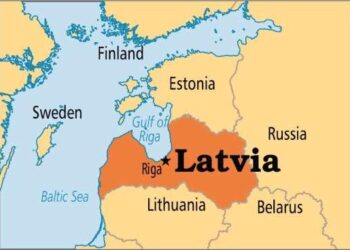NATO allies have intensified their commitment to regional security through the recent Namejs 2025 exercise held in Latvia. This multinational military drill, organized under Latvia’s leadership, aims to enhance interoperability and readiness among allied forces in the Baltic region amid rising geopolitical tensions. As announced on mncne.nato.int, Namejs 2025 brings together troops from several NATO member states to conduct comprehensive training operations designed to bolster collective defense capabilities and reassure regional partners of the alliance’s steadfast presence.
NATO Allies Enhance Interoperability Through Joint Exercises in Latvia
This year’s exercise brought together troops from ten NATO member countries, showcasing their ability to operate seamlessly across complex scenarios. Participants focused on enhancing joint command coordination, rapid troop deployment, and integrated defense systems. Key components included simulated air defense maneuvers and cyber defense drills, all aimed at reinforcing alliance resilience in the Baltic region. Latvia’s strategic location serves as a critical point for these collaborative operations, providing a robust environment for real-time tactical training.
The exercise also emphasized interoperability in:
- Multinational communication systems
- Joint logistics and supply chains
- Combined arms tactical drills
- Civil-military cooperation
A summary of participating nations and main focus areas is provided below:
| Country | Primary Role | Key Capability Demonstrated |
|---|---|---|
| Latvia | Host & Logistics | Terrain Familiarity & Support |
| Estonia | Infantry | Urban Warfare Drill |
| Poland | Mechanized Units | Rapid Deployment |
| Germany | Air Support | Close Air Support Coordination |
| United States | Cyber Defense | Cyberattack Simulation |
Advanced Defense Tactics and Coordination Featured in Namejs 2025
During the Namejs 2025 exercise, NATO allies demonstrated cutting-edge defense strategies designed to enhance interoperability and rapid response capabilities across the Baltic region. The maneuvers emphasized synchronized multi-domain operations involving land, air, and cyber units working in tandem to counter complex threats. Command centers utilized real-time data sharing platforms, enabling swift decision-making and improved situational awareness among participating forces. Key facets included integrated electronic warfare support, precision strikes, and advanced reconnaissance missions, showcasing a united frontline defense readiness.
Coordination extended beyond tactical drills to include logistical support and civil-military cooperation, ensuring seamless sustainment of operations in a simulated high-threat environment. The following highlights the core elements of this exercise:
- Joint command and control: Streamlined communication networks for faster operational command.
- Cyber defense integration: Protecting critical infrastructure from simulated cyber-attacks.
- Rapid deployment: Swift mobilization of forces and assets within the Baltic region.
- Combined arms coordination: Enhanced teamwork between infantry, armor, and aerial units.
| Domain | Focus Area | Outcome |
|---|---|---|
| Land | Armored maneuver exercises | Increased battlefield fluidity |
| Air | Joint air patrol coordination | Improved airspace control |
| Cyber | Network defense drills | Fortified digital resilience |
| Logistics | Supply chain synchronization | Enhanced operational endurance |
Recommendations for Sustained Baltic Security Collaboration and Rapid Response
To ensure the resilience and effectiveness of Baltic security efforts, it is essential to prioritize continuous joint training exercises that enhance interoperability among NATO forces. Emphasizing real-time intelligence sharing and streamlined communication channels will empower rapid decision-making during crises. Experts stress the importance of integrating emerging technologies, such as AI-driven surveillance and cyber-defense tools, to preemptively identify and neutralize threats.
Further recommendations include the establishment of permanent rapid reaction units stationed in strategic locations across the Baltics. This initiative would be supported by:
- Regular evaluation drills to test and improve responsiveness
- Collaborative logistics frameworks for swift deployment of personnel and equipment
- Enhanced joint command structures to unify operational efforts
| Recommendation | Benefit | Implementation Timeline |
|---|---|---|
| Permanent Rapid Reaction Units | Faster deployment in emergencies | 2025-2026 |
| AI-Enhanced Surveillance | Improved threat detection | 2025 |
| Joint Communication Platforms | Seamless information flow | 2024-2025 |
Insights and Conclusions
As the Namejs 2025 exercise concludes, NATO allies reaffirm their unwavering commitment to the security and stability of the Baltic region. Through enhanced cooperation and joint training in Latvia, the alliance demonstrates its readiness to respond swiftly to any potential threats. This strengthened presence not only reinforces deterrence but also highlights the enduring solidarity among member states in safeguarding Europe’s eastern flank. The transparent and coordinated efforts showcased in Namejs 2025 underscore NATO’s strategic resolve amid evolving security challenges.















